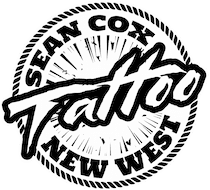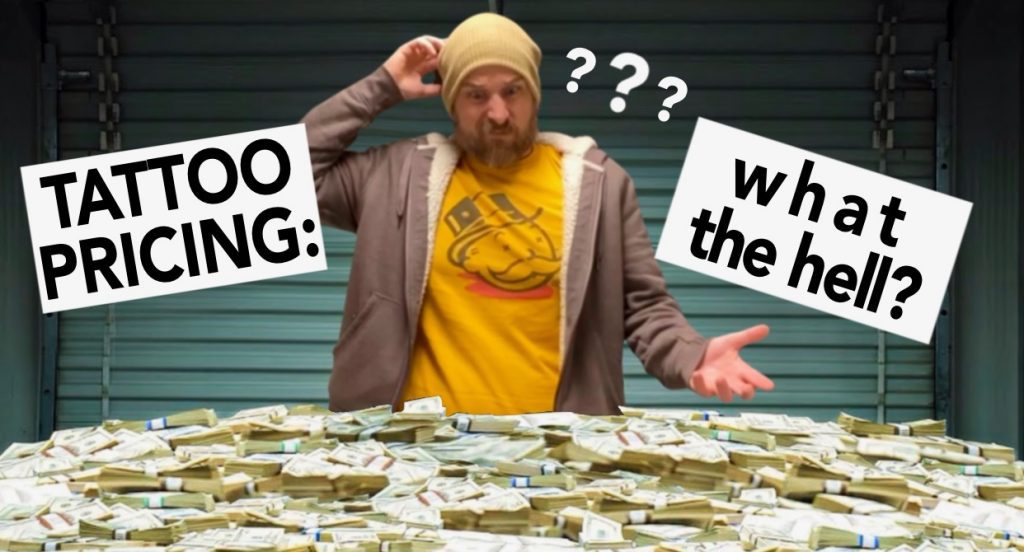Demystifying Tattoo Pricing: What You Need to Know
Tattoo pricing can be a bit of a puzzle, and if you’ve ever wondered why the cost of getting inked can vary so much, you’re not alone. Whether you’re a tattoo virgin or a grizzled tattoo vet, understanding how tattoo prices are determined can help you budget for your next piece and maybe even avoid some sticker shock.
Alright, let’s break down how I price tattoos, what factors go into those estimates, and why the final cost might not always match your initial expectations.
The Basics: My $200 Hourly Rate
Let’s start with the basics: my hourly rate is $200. This rate is pretty standard for tattoo artists in our area, and it’s a bargain for an experienced one. But what does that actually mean for your wallet?
When I give you an estimate, I’m considering how many hours the piece will take from start to finish. But here’s the thing: predicting how long a tattoo will take isn’t always straightforward. Some tattoos are deceptively simple-looking but can take hours due to the intricacy of the design or the challenges of the placement. Others might look complex but can be executed quickly if the conditions are just right.
Examples: Part 1
The following video shows a bunch of tattoos that I’ve done and the price I charged. Notice the more detailed pieces have higher prices and the simpler ones have low prices.
Size, Detail, and Color: The Big Three
The first things I consider when estimating cost are the size of the tattoo, the level of detail, and how much color is involved.
- Size: Bigger tattoos usually take longer, which means more hours, which means more money. But size alone doesn’t tell the whole story. You could have a large, bold tattoo with minimal detail that takes less time than a small piece crammed full of intricate linework. Size matters—but it’s not everything.
- Detail: Speaking of detail, the more intricate the design, the longer it’s going to take. Fine lines, shading, and complex patterns can add hours to a session, and that means a higher cost.
- Color: Adding color to a tattoo can also increase the price. Not only does it take more time to pack in color, but some colors require multiple passes to ensure they’re vibrant and long-lasting. Plus, blending different colors adds another layer of complexity that can stretch out the session time.
Placement: Location, Location, Location
Where you’re getting tattooed on your body plays a significant role in the cost.
Some areas have stretchy skin, which means there is actually more surface to cover than what you see when the body is resting in a neutral position. Examples of stretchy areas are the stomach, sides, lower back, or neck. The neck has the added complication of being harder to reach, with the chin or shoulders getting in the way of access at just the right angle, which increases the time it takes to complete the piece.
On the other hand, areas like the lower legs or forearms, where the skin is generally tighter and easier to access, tend to be quicker and, therefore, less expensive to tattoo for the same design.
Why Estimates Are Just That—Estimates
Even with 18 years of experience, estimates can still be a little unpredictable. It’s not an exact science; it’s an art, and sometimes that means the tattoo process throws us a curveball.
I do my best to overestimate rather than underestimate. Why? Because it’s way more fun to tell you it’ll be cheaper than expected than the other way around. But I’m not one to drag things out. I don’t take smoke breaks on your time, and I’m certainly not here to milk the clock. My goal is always to give you the best possible tattoo while respecting both your time and your money.
The Wild Cards: Pain Tolerance, Breaks, and Skin Resistance
Here’s where things get personal. Every client is different, and a lot of factors can affect how long a tattoo session lasts beyond the design and placement.
- Pain Tolerance: Some people can sit for hours without flinching, while others need more frequent breaks. There’s no shame in needing to take a break, but it does mean the session will take longer, which impacts the overall cost.
- Ability to Sit Still: Moving around during the tattoo process, whether because of pain, restlessness, or nerves, can slow things down. The more still you can sit, the faster I can work, which could save you some cash.
- Skin Resistance: Everyone’s skin reacts differently to the tattooing process. Some skin types take ink more easily, while others might be more resistant, requiring multiple passes to get the desired result. If your skin doesn’t cooperate, the session might take longer, which again affects the cost.
Examples: Part 2
Here are some more examples of what I charged for different tattoos, large, small, complex and simple. You’ll notice a real cheap one from the ‘Get What You Get’ gumball machine where you can get a steal of a deal if you’re willing to take a chance.
The Value of Your Tattoo
I know tattoo prices can seem high, especially for large or intricate pieces. But remember, you’re not just paying for the hours I spend tattooing. You’re paying for my years of experience, my artistic and technical skill, plus the care I put into each session. You’re also paying for a custom piece of art that’s going to be with you for life.
Good tattoos aren’t cheap, and cheap tattoos aren’t good. It’s an investment in something that’s going to be part of you forever, so it’s worth making sure you’re getting the best possible work.
The Day Rate
For those looking to spend the day with me (and, let’s be honest, who wouldn’t?), my day rate is $900 for a solid six hours of tattooing. This is perfect for bigger pieces that are going to take a while. You get to settle in, and I get to go deep into the creative process without watching the clock every second. Plus, you’ll get a significant chunk of your tattoo done in one go, which is always a win.
Multiple Sessions? You Pay Per Session, Not Upfront
If your tattoo is large or complex enough to require multiple sessions, don’t worry—I won’t ask you to fork over all the cash upfront. You’ll pay per session, which spreads the cost out and makes it a bit easier on your wallet. We’ll chip away at that masterpiece one session at a time.
Pro Tip: Bundle Your Small Tattoos
Here’s a little insider tip for the savvy tattoo enthusiast. If you’ve got a few smaller tattoos that take less than an hour each, you can avoid paying the minimum charge by bundling them together or tacking them onto the end of a larger session. This way, you maximize your time and minimize the cost per tattoo. Think of it like a tattoo combo deal—because who doesn’t love a good deal?
Got an Idea? Let’s Talk Costs
If you’ve got a concept for a tattoo and you’re curious about how much it might cost, don’t be shy. Fill out a consult form to get in touch or drop your idea in the comments, and I can give you a ballpark figure on what it’ll set you back. Keep in mind that I’ll need to know the size, placement, and any other details you’ve got in mind to give you the most accurate estimate possible.
In the end, tattoo pricing is about finding a balance between what you want and what you’re willing to invest in your body art. It’s my job to help you navigate that and make sure you walk away with a piece you’re proud to wear.
So, let’s get those ideas rolling and figure out how to make your next tattoo happen—without selling out your bank account or your kidney on the black market. I’ll work with your budget, and together, we’ll make sure your next piece of art is as awesome as it is affordable.

